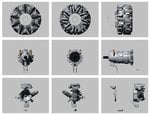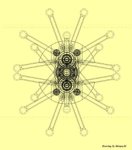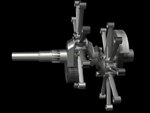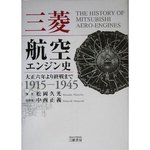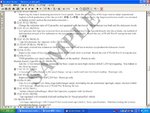I am dazed and confused about the late WWII Japanese Homare radial engine.
The Homare 21 is listed as having a take off power of 1990 HP.
This is comparable to the Pratt and Whitney R-2800 engine which without water injection had a similar 2000 HP take-off rating.
My confusion comes from that fact that all the texts I can find indicate that the late WWII Japanese Homare radial engine was "an 18 cylinder version of the Nakajima Sakae engine" with a similar 130 mm (5.12 inch) x 150 mm (5.90 inch) stroke. That bore and stroke works out to 35.8 liters or 2186 cubic inches for the Homare.
Considering that P&W, considered to be one of the best engine companies in the world, needed 46 liters (2804 cubic inches) for similar rated power, how did the Nakajima achieve 1990 HP from an engine that was 22% smaller than the R-2800??
I was under the impression that Japanese fuel was inferior to American 100/130 fuel, so higher boost does not seem to be the answer.
I wonder if the cylinder size was mis-translated / mis-quoted at the end of the war and this wrong information has just been repeated since then. Maybe the Homare had larger cylinders, and therefore a larger displacement than nearly every text indicates.
Does anyone have any documents that would shed light on how the engineers at Nakajima trumped the engineers at P&W??
Piper106
The Homare 21 is listed as having a take off power of 1990 HP.
This is comparable to the Pratt and Whitney R-2800 engine which without water injection had a similar 2000 HP take-off rating.
My confusion comes from that fact that all the texts I can find indicate that the late WWII Japanese Homare radial engine was "an 18 cylinder version of the Nakajima Sakae engine" with a similar 130 mm (5.12 inch) x 150 mm (5.90 inch) stroke. That bore and stroke works out to 35.8 liters or 2186 cubic inches for the Homare.
Considering that P&W, considered to be one of the best engine companies in the world, needed 46 liters (2804 cubic inches) for similar rated power, how did the Nakajima achieve 1990 HP from an engine that was 22% smaller than the R-2800??
I was under the impression that Japanese fuel was inferior to American 100/130 fuel, so higher boost does not seem to be the answer.
I wonder if the cylinder size was mis-translated / mis-quoted at the end of the war and this wrong information has just been repeated since then. Maybe the Homare had larger cylinders, and therefore a larger displacement than nearly every text indicates.
Does anyone have any documents that would shed light on how the engineers at Nakajima trumped the engineers at P&W??
Piper106

